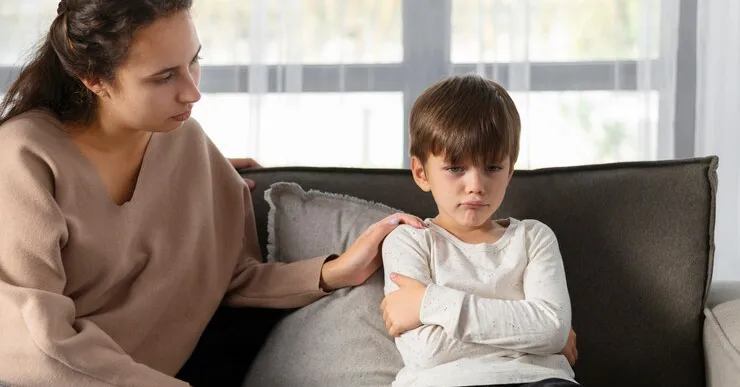- I. Introduction
- II. What is Child Mental Health?
- III. Positive and Negative Child Mental Health
- IV. Signs of Child Mental Health Issues
- V. Causes of Child Mental Health Issues
- VI. Types of Child Mental Health Issues
- VII. Solutions for Child Mental Health Issues
- VIII. Promoting Child Mental Health
- IX. Seeking Professional Help
- FAQ
I. Introduction
Child mental health is a critical aspect of overall well-being that often goes overlooked. As parents, educators, and caregivers, we must recognize the significance of addressing mental health issues in children. The emotional and psychological development of our young ones profoundly impacts their future success, relationships, and overall quality of life. In this blog post, we aim to provide valuable information and practical solutions to promote positive mental health in children.
II. What is Child Mental Health?
Child mental health refers to a child’s emotional, psychological, and social well-being. It encompasses their ability to manage emotions, form healthy relationships, and cope with life’s challenges. Just as physical health is essential for growth, mental health plays a crucial role in a child’s overall development.
Factors Influencing Child Mental Health
- Emotional Factors: Children experience a wide range of emotions, from joy and excitement to fear and sadness. Emotional well-being involves understanding and expressing these feelings appropriately. As parents, we must create a safe space for children to share their emotions without judgment.
- Psychological Factors: Cognitive development, self-esteem, and problem-solving skills contribute to a child’s psychological well-being. Encouraging curiosity, providing stimulating activities, and fostering a growth mindset are essential for nurturing their mental health.
- Social Factors: Healthy relationships with family, peers, and teachers significantly impact a child’s mental health. Social skills, empathy, and conflict resolution abilities develop through positive interactions. Encourage playdates, teamwork, and open communication to enhance social well-being.
The Holistic Approach

To ensure a child’s mental well-being, we must adopt a holistic approach:
- Education and Awareness: Educate yourself and others about child mental health. Understand common challenges, such as anxiety, depression, and behavioral issues. Recognize warning signs and seek professional help when needed.
- Promote Resilience: Teach children coping strategies and resilience. Encourage problem-solving, positive self-talk, and stress management techniques. Resilient children bounce back from setbacks and adversity.
- Create a Supportive Environment: A nurturing environment at home, school, and within the community fosters mental health. Demonstrate compassion, engage attentively, and acknowledge their emotions. Encourage open conversations about emotions.
- Physical Health Matters: Physical and mental health are interconnected. Ensure children get enough sleep, eat nutritious meals, and engage in regular physical activity. A healthy body supports a healthy mind.
- Reduce Stigma: Normalize discussions about mental health. Avoid labeling or shaming children for their feelings. Let them know it’s okay to seek help when they need it.
Prioritizing child mental health is an investment in their future. By understanding its importance and implementing practical strategies, we can create a world where every child thrives emotionally and psychologically.
III. Positive and Negative Child Mental Health
Characteristics of Positive Child Mental Health
Positive child mental health lays the foundation for a thriving future. Here are key characteristics to foster:
- Emotional Resilience: Resilient children bounce back from adversity. They develop coping skills to manage stress, disappointment, and setbacks. Encourage emotional expression and teach problem-solving techniques.
- Healthy Relationships: Children with positive mental health build meaningful connections. Nurturing relationships with family, friends, and teachers enhance their social and emotional well-being.
- Effective Coping Mechanisms: Equipping children with healthy coping strategies is crucial. Teach mindfulness, deep breathing, and positive self-talk. These tools empower them to handle life’s challenges.
Consequences of Negative Child Mental Health
When a child’s mental health suffers, it impacts various aspects of their life:
- Behavioral Issues: Children may exhibit aggression, defiance, or withdrawal. Behavioral problems disrupt learning and social interactions.
- Academic Difficulties: Mental health struggles affect concentration, memory, and motivation. Academic performance declines, leading to frustration and self-doubt.
- Social Isolation: Anxiety, depression, or low self-esteem can isolate children. They withdraw from peers, missing out on essential social experiences.
Long-Term Impact of Untreated Mental Health Problems
Untreated mental health issues during childhood have lasting effects:
- Adult Mental Health: Childhood struggles often persist into adulthood. Untreated conditions may evolve into anxiety disorders, depression, or substance abuse.
- Physical Health: Mental health influences physical well-being. Chronic stress impacts the immune system, cardiovascular health, and overall longevity.
- Social Functioning: Poor mental health affects relationships, career success, and community involvement. Early intervention prevents long-term social challenges.
IV. Signs of Child Mental Health Issues

Recognizing signs early is crucial for timely intervention:
- Behavioral Changes: Watch for sudden shifts in behavior—aggression, withdrawal, or excessive clinginess. Unexplained anger or irritability warrants attention.
- Mood Swings: Extreme mood swings, persistent sadness, or frequent tearfulness may indicate underlying mental health issues.
- Academic Decline: Notice changes in school performance. Falling grades, lack of interest, or difficulty concentrating signal distress.
- Social Withdrawal: If a child avoids social situations, struggles to make friends, or isolates themselves, explore the reasons behind it.
- Physical Symptoms: Headaches, stomachaches, and unexplained physical complaints can be stress-related. Rule out medical causes.
Parents and caregivers, stay vigilant. Consult a professional if you observe any worrisome indications. Early support ensures a brighter future for our children.
V. Causes of Child Mental Health Issues
Child mental health is influenced by a myriad of factors, each contributing to the intricate tapestry of a child’s well-being. Let’s delve into these key contributors:
1. Genetic Predisposition:
Genetics play a significant role in mental health. Children with a family history of anxiety, depression, or other disorders may inherit a predisposition. While genes don’t guarantee mental health issues, they create a vulnerability that interacts with environmental factors.
2. Environmental Factors:
- Early Childhood Experiences: Traumatic events, neglect, or abuse during early years can shape a child’s mental health. Adverse childhood experiences (ACEs) impact brain development and emotional regulation.
- Parenting Style: Parental warmth, consistency, and responsiveness influence a child’s emotional resilience. A nurturing environment fosters positive mental health.
- Peer Relationships: Bullying, social isolation, or peer rejection affect self-esteem and emotional well-being. Healthy friendships contribute to mental wellness.
3. Traumatic Experiences:
Physical or emotional trauma—such as accidents, loss of a loved one, or witnessing violence—can disrupt a child’s sense of safety. Trauma impacts brain chemistry and coping mechanisms.
4. Family Dynamics:
- Parental Mental Health: Parents’ mental well-being directly affects children. Depression, substance abuse, or marital conflict create stress within the family.
- Parent-Child Attachment: Secure attachment fosters emotional regulation. Insecure attachment (e.g., neglect or inconsistent caregiving) may lead to anxiety or behavioral issues.
5. Societal Influences:
- Media Exposure: Constant exposure to distressing news or violent content affects children’s mental health. Monitor media consumption.
- School Environment: Academic pressure, bullying, and peer dynamics impact mental well-being. Schools play an essential role in fostering favorable mental well-being.
VI. Types of Child Mental Health Issues

1. Anxiety Disorders:
- Generalized Anxiety Disorder (GAD): Excessive worry, restlessness, and physical symptoms (e.g., headaches, stomachaches).
- Social Anxiety Disorder: Fear of social situations, leading to avoidance.
2. Depression:
- Persistent sadness, loss of interest, changes in sleep or appetite, and feelings of hopelessness.
3. Attention-Deficit/Hyperactivity Disorder (ADHD):
- Inattention, hyperactivity, impulsivity, affecting academic performance and social interactions.
4. Behavioral Disorders:
- Oppositional Defiant Disorder (ODD): Frequent defiance, anger, and hostility.
- Conduct Disorder: Aggressive behavior, rule violations, and disregard for others’ rights.
Early Identification and Intervention Matter
Recognizing signs early is crucial. Behavioral changes, mood shifts, academic struggles, or social withdrawal warrant attention. Seeking professional help ensures better outcomes for our children. Let’s nurture their mental health with compassion and understanding.
VII. Solutions for Child Mental Health Issues
Child mental health requires a multifaceted approach, combining compassion, education, and evidence-based strategies. Let’s explore effective solutions:
1. Creating a Supportive Environment:
- At Home: Parents and caregivers play a pivotal role. Foster open communication, active listening, and emotional validation. Create routines that prioritize emotional well-being. Encourage expression of feelings without judgment.
- At School: Schools must prioritize mental health. Implement anti-bullying programs, peer support groups, and stress-reduction techniques. Teachers should be trained to recognize signs of distress and provide appropriate support.
2. Therapy and Counseling:
- Individual Therapy: Child therapists help children explore emotions, develop coping skills, and address specific challenges. Cognitive-behavioral therapy (CBT) is effective for anxiety and depression.
- Family Therapy: Involving the entire family helps improve communication, resolve conflicts, and strengthen relationships. It addresses family dynamics impacting the child’s mental health.
3. Medication (if Necessary):
- Some children may benefit from psychiatric medications. Consult a child psychiatrist to discuss risks, benefits, and appropriate prescriptions. Medication should invariably be included in a thorough treatment regimen.
4. Evidence-Based Interventions:
- Play Therapy: For younger children, play therapy allows them to express emotions through play. It helps build trust and resilience.
- Mindfulness and Relaxation Techniques: Teach children mindfulness exercises, deep breathing, and progressive muscle relaxation. These techniques reduce anxiety and promote emotional regulation.
VIII. Promoting Child Mental Health
1. Open Communication:
- Encourage children to share their feelings openly. Create a safe space where they can express joy, sadness, or fear without hesitation.
2. Active Listening:
- Listen attentively when children talk. Validate their emotions and show empathy. Sometimes, being heard is therapeutic.
3. Fostering Emotional Intelligence:
- Teach emotional literacy—identifying and understanding emotions. Help children recognize their feelings and express them appropriately.
4. Healthy Lifestyle Habits:
- Regular Exercise: Physical activity reduces stress, boosts mood, and improves overall well-being.
- Balanced Nutrition: A healthy diet supports brain function. Include fruits, vegetables, whole grains, and lean proteins.
- Adequate Sleep: Lack of sleep affects mood and cognitive functioning. Ensure children get enough rest.
IX. Seeking Professional Help
Parents and caregivers, know that seeking professional help is not a sign of weakness. It’s a proactive step toward your child’s well-being. Consult pediatricians, psychologists, or school counselors. Early intervention leads to brighter futures.
FAQ
1. How Can I Improve My Child’s Mental Health?
Improving your child’s mental health involves a combination of nurturing their emotional well-being and creating a supportive environment. Here are some strategies:
- Open Communication: Promote your child to communicate their emotions freely, devoid of criticism. Let them know they’re not alone, and it’s okay to seek help when needed.
- Healthy Habits: Ensure your child gets enough rest, stays hydrated, eats a balanced diet, exercises regularly, and gets sunlight. These habits boost energy, mood, and mental health.
- Mindfulness and Gratitude: Teach your child mindfulness techniques and the practice of gratitude. Both can positively impact mental well-being.
2. How Do I Tell If My Child Has Mental Health Issues?
Recognizing signs of mental health issues in children is crucial. Look out for:
- Behavioral Changes: Sudden shifts in behavior, aggression, withdrawal, or excessive clinginess.
- Mood Swings: Extreme mood changes, persistent sadness, or frequent tearfulness.
- Academic Decline: Falling grades, lack of interest, or difficulty concentrating.
- Social Withdrawal: Avoiding social situations or struggling to make friends.
3. How to Help a Mentally Ill Child?
Supporting a mentally ill child involves:
- Seeking Professional Help: Consult pediatricians, psychologists, or school counselors.
- Creating a Safe Space: Encourage open communication and active listening.
- Promoting Self-Care: Teach stress management, self-compassion, and healthy coping strategies.
4. What Is a Common Mental Health Condition in Children?
Anxiety disorders are prevalent in children. Generalized anxiety disorder (GAD) and social anxiety disorder are prevalent. These conditions cause excessive worry, fear, and stress.
5. What Are the 7 Main Mental Disorders?
While there are many mental disorders, here are seven significant ones:
- Depression: Persistent sadness, loss of interest, and changes in sleep or appetite.
- Anxiety Disorders: Including GAD, social anxiety, and panic disorder.
- Attention-Deficit/Hyperactivity Disorder (ADHD): Affects attention, impulsivity, and hyperactivity.
- Autism Spectrum Disorder (ASD): Impacts social communication and behavior.
- Obsessive-Compulsive Disorder (OCD): Involves repetitive thoughts and behaviors.
- Post-Traumatic Stress Disorder (PTSD): Arises after traumatic experiences.
- Eating Disorders: Such as anorexia nervosa or bulimia.
6. Can a 7-Year-Old Have Mental Illness?
Yes, mental health issues can affect children as young as 7. Early intervention is crucial for better outcomes.
7. What Age Can Mental Health Start?
Mental health development begins in infancy. Emotional well-being evolves throughout childhood and adolescence.
8. What Age Does Mental Issues Start?
Mental health issues can emerge at any age, but early signs often appear during childhood or adolescence.
9. Can a 13-Year-Old Have Mental Illness?
Absolutely. Adolescents can experience mental health challenges. It’s essential to provide support and seek professional help if needed.
*Image credits- freepik*
Important Notice:
The information provided on “health life ai” is intended for informational purposes only. While we have made efforts to ensure the accuracy and authenticity of the information presented, we cannot guarantee its absolute correctness or completeness. Before applying any of the strategies or tips, please consult a professional medical adviser.















